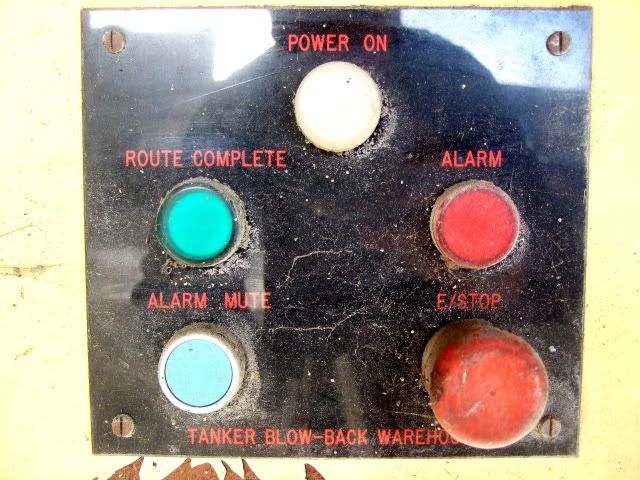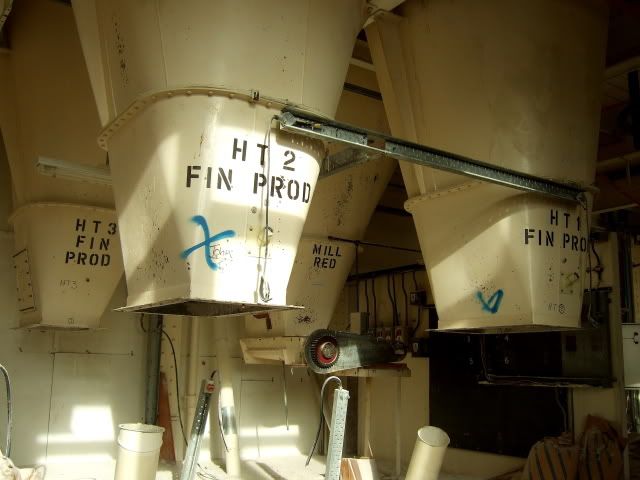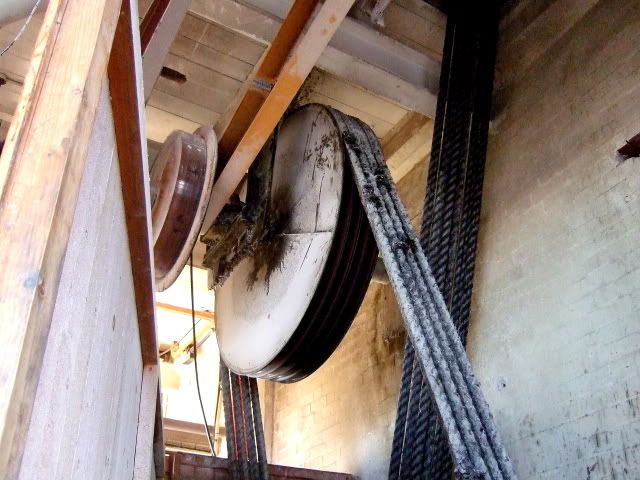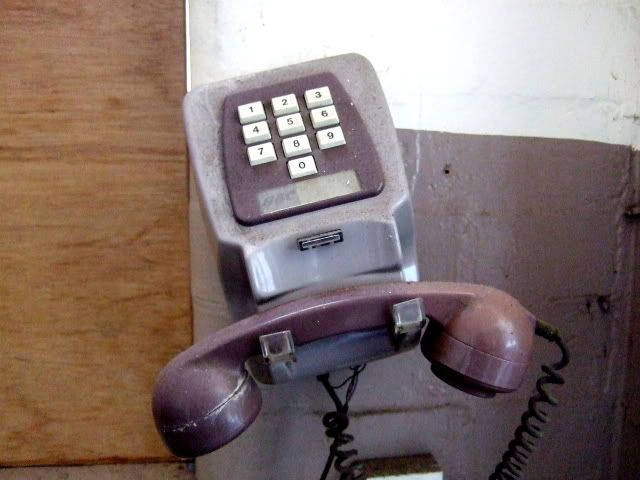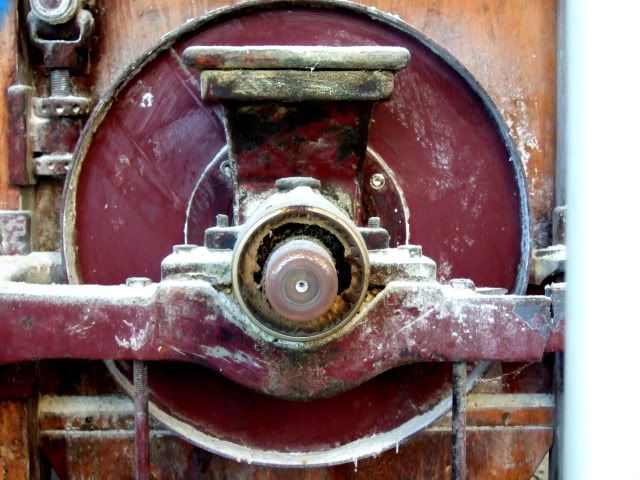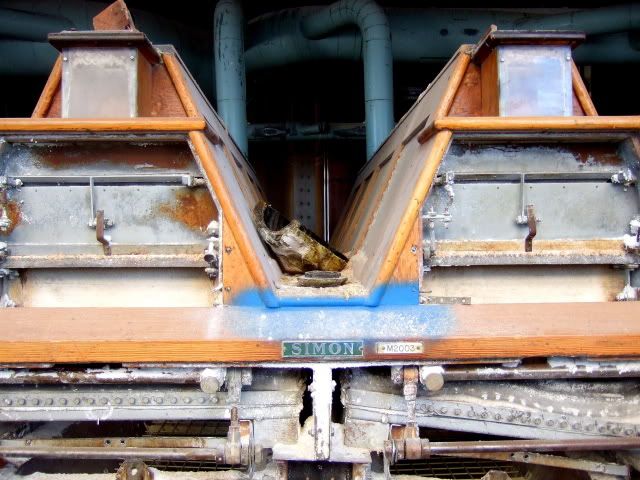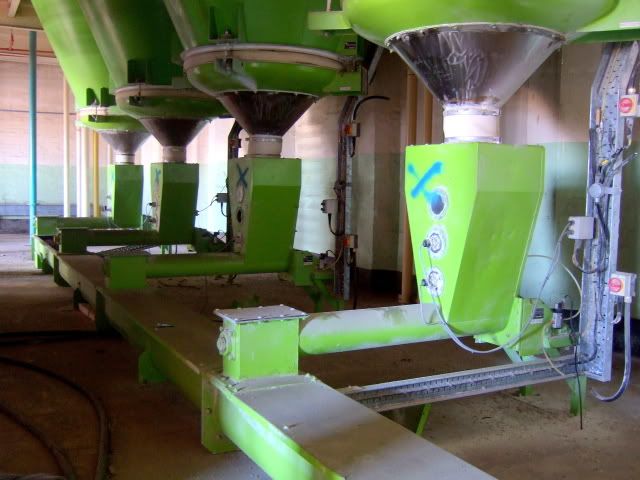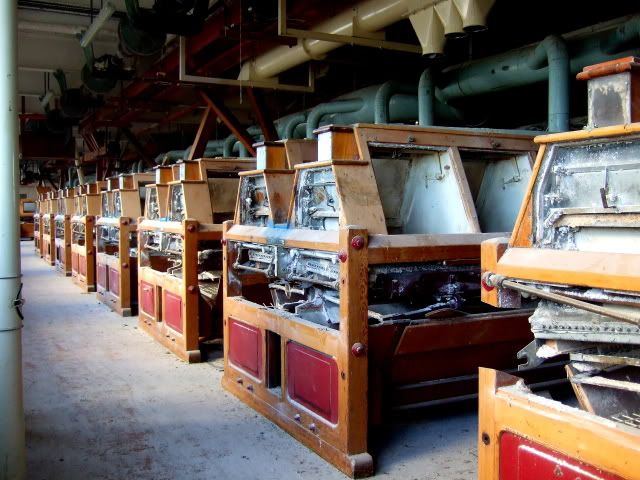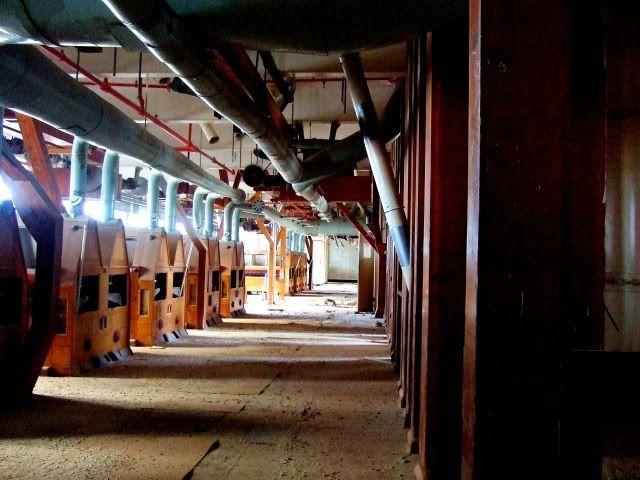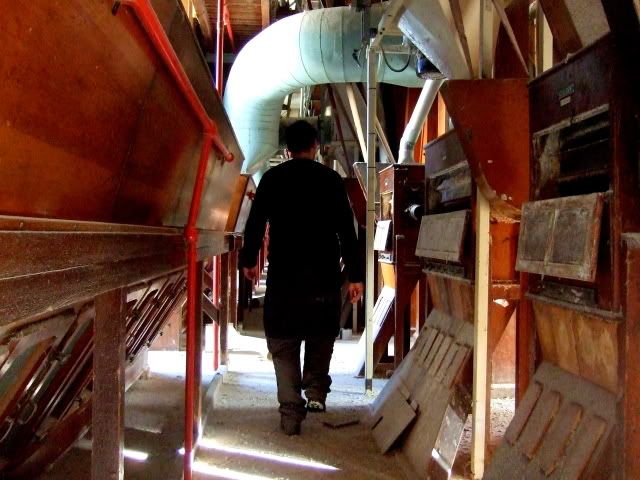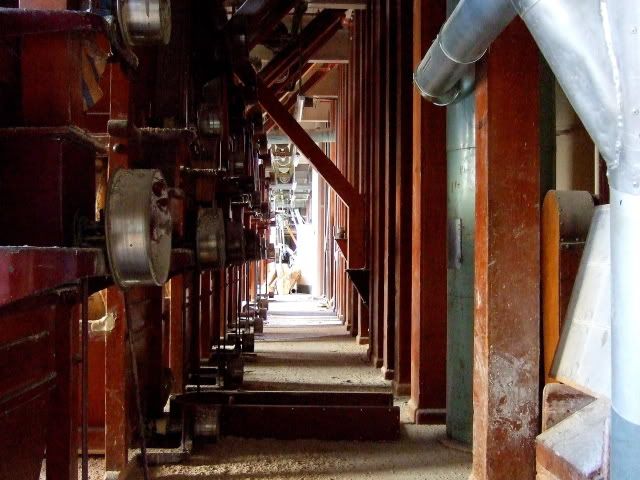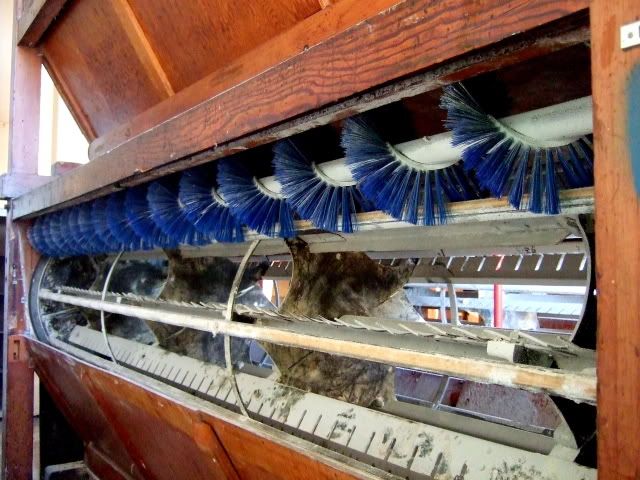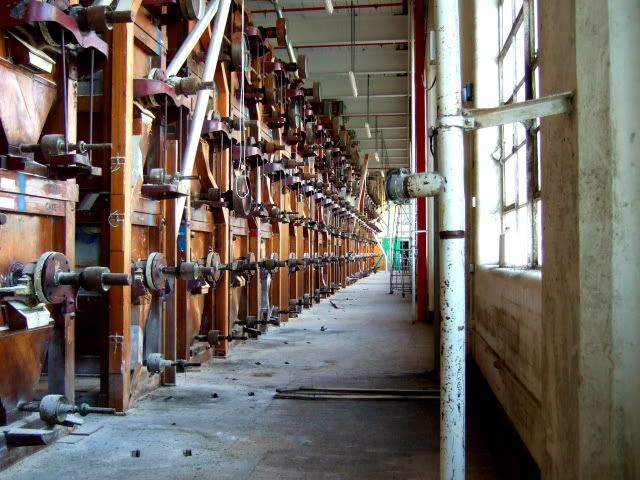Like many industrial cities, Hull suffered badly at the hands of the Luftwaffe, and Clarence Mill suffered terrible bomb damage during the months of heavy bombing on the city. Seven years after the war ended, Clarence Mill was built again on the site of the earlier mill, and ten years later became Rank Hovis McDougall (RHM).
Today the site lies empty, three years after it shut down.
Inside is virtually intact. There is no power on any more, and control panels are everywhere.
Although the ground floor is pitch dark, the rest of the levels are bathed in a wonderful light, caused by the flour which is everywhere.
The top of one of the enormous belt drives.
Operator....?
Instead of using millstones, Clarence mill used giant milling and grinding machines to mill the flour. On every floor, these machines stand silent, still with flour in them.
For some reason, many of the belts have gone.
A line manager's office on the factory floor
Because each floor can't be isolated in case of emergency, Health and Safety shut it down.
More recent hoppers
Older wooden milling machines
With all of the wood and the silence, these floors reminded me of a library.
Today this place is empty save for the rats and mice. Current plans are for a leisure complex and student housing.
Inside one of the machines
I love hand painted signs, and here there are so many.
Up on the roof
Another victim of the times, British Extracting taken from the roof.
The first aid station.
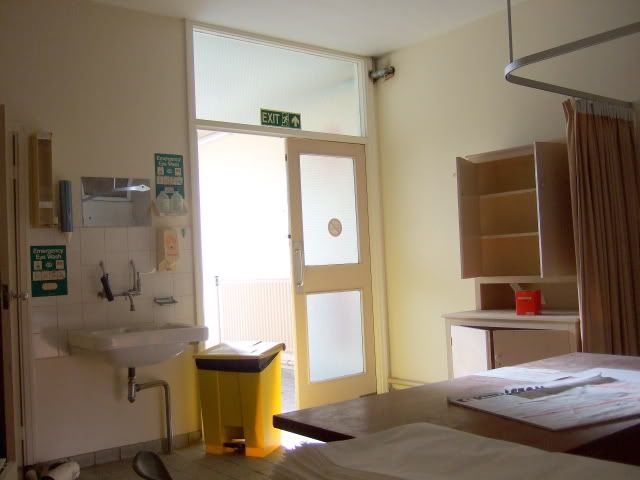
Results 1 to 1 of 1
Thread: Rank Hovis Mill, Hull, Nov '08
-
20-11-2008, 10:41 PM #1
 Rank Hovis Mill, Hull, Nov '08
Rank Hovis Mill, Hull, Nov '08
Similar Threads
-
Archived: Riverside Studio, Hull
By Dr.Doo in forum Other SitesReplies: 3Last Post: 17-06-2009, 10:09 PM -
Rank Hovis - Selby - -ARCHIVED
By KingElvis in forum Industrial sitesReplies: 0Last Post: 07-05-2008, 08:26 AM




